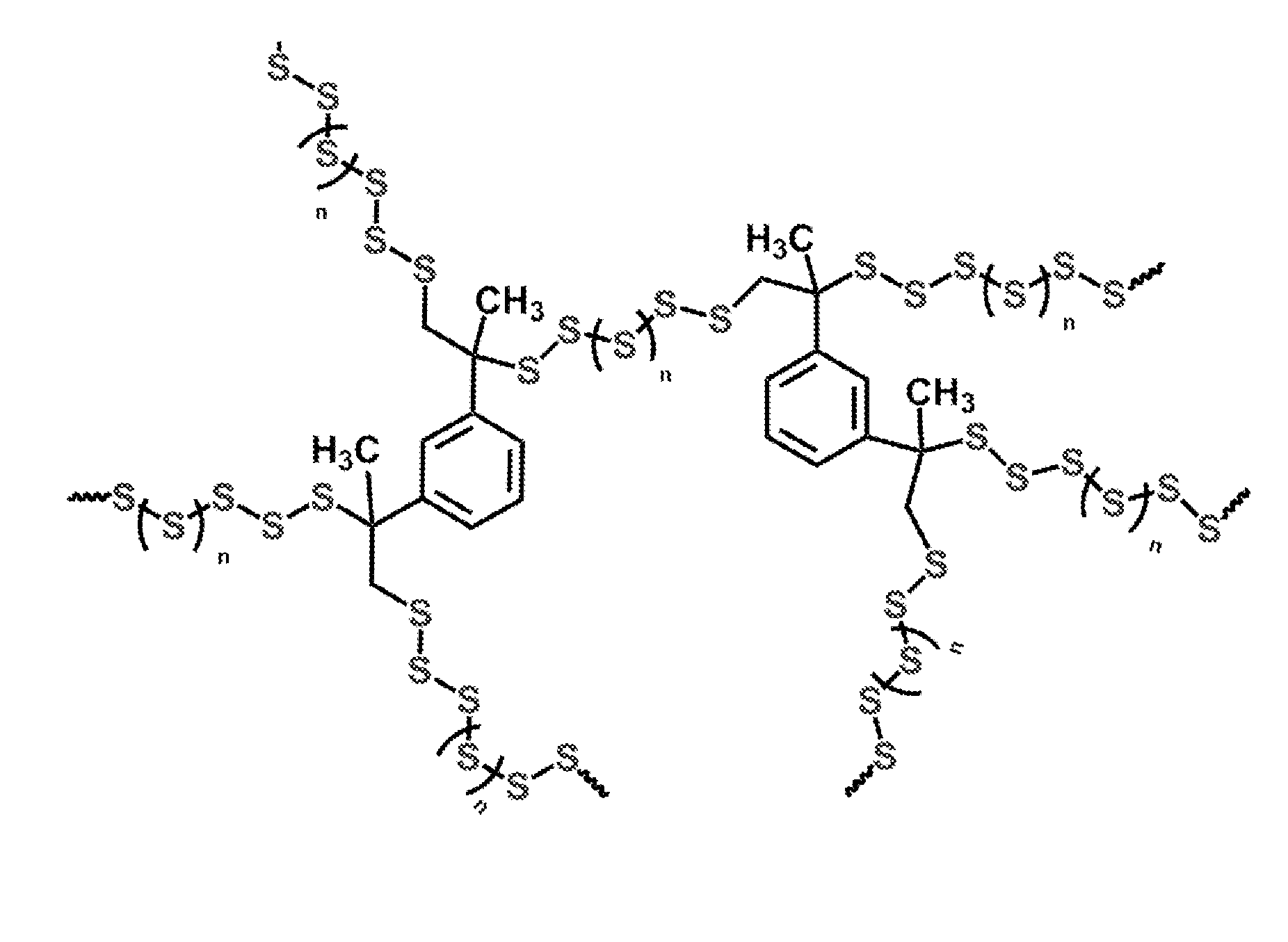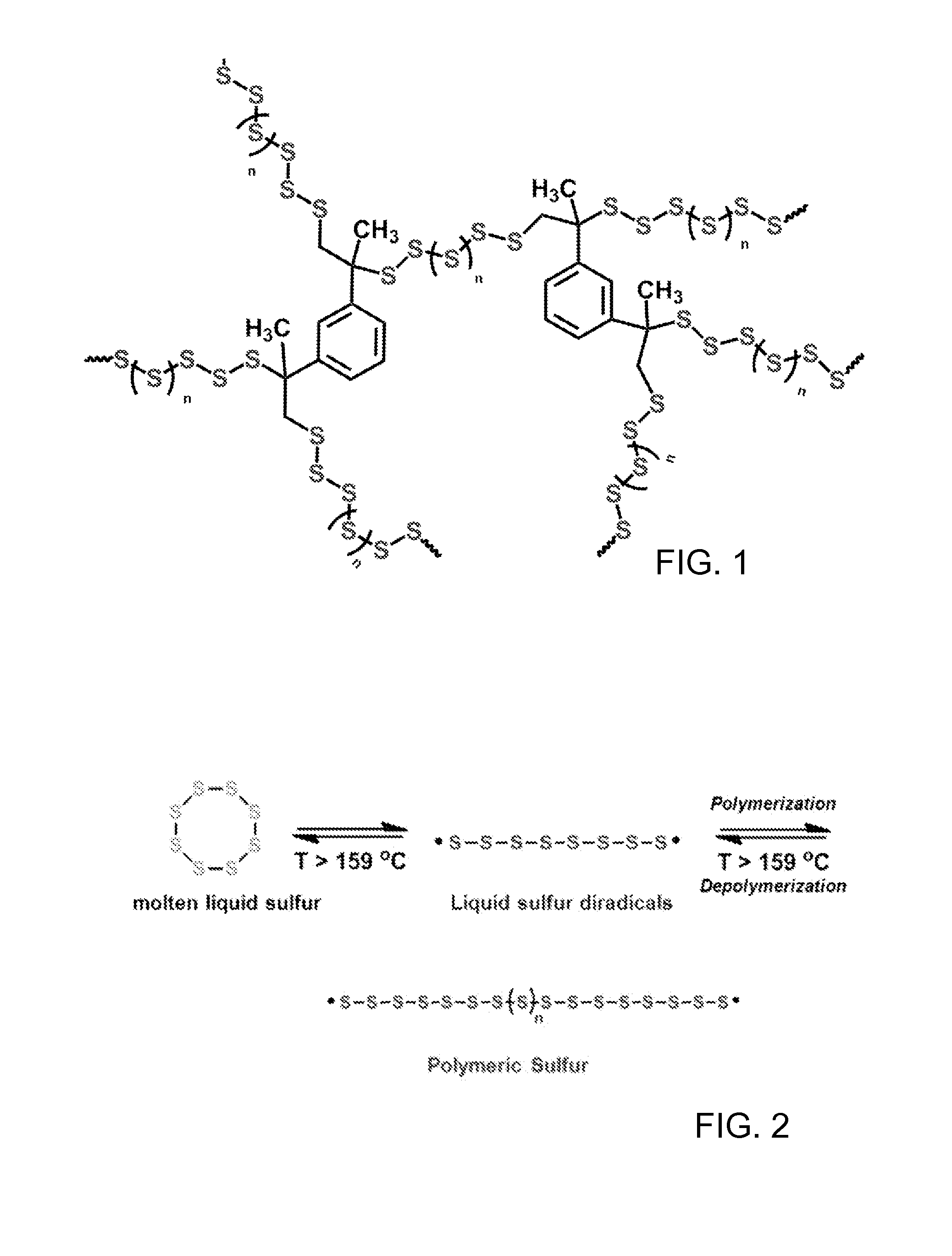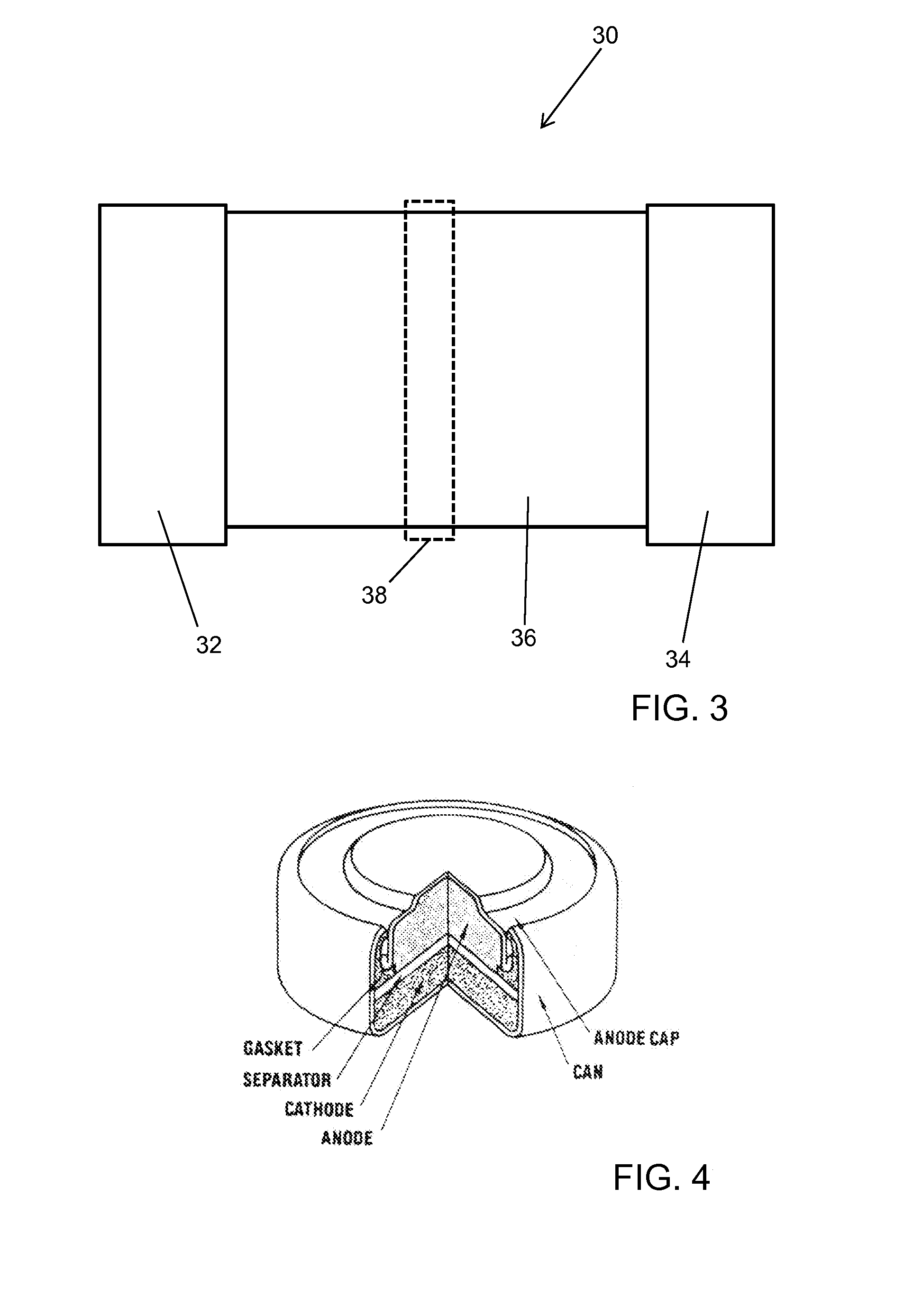High sulfur content copolymers and composite materials and electrochemical cells and optical elements using them
a technology of composite materials and high sulfur content, which is applied in the direction of non-metal conductors, cell components, conductors, etc., can solve the problems of poor solid state mechanical properties of crystalline solids, difficult processing of sulfur, and brittleness, so as to improve charge capacity and cycle stability, facilitate large-scale production, and improve the effect of conductivity
- Summary
- Abstract
- Description
- Claims
- Application Information
AI Technical Summary
Benefits of technology
Problems solved by technology
Method used
Image
Examples
example 1
Viscosity Modification of Elemental Sulfur
[0086]In one experiment, mixtures of sulfur (provided as S8 herein unless otherwise described, 600 mg) with various weight percents of triphenylphosphine (TPP) (2.5, 5, 7.5 and 10 wt % TPP with respect to sulfur) were prepared in 4 mL vials each equipped with a stir bar. The mixtures were heated at 185° C. and stirred at 550 rpm. Their viscosities were assessed qualitatively, and the mixtures containing 7.5 wt % and 10 wt % TPP had markedly lowered viscosities, and remained stirrable.
[0087]In another experiment, powdered sulfur (0.700 g, 2.19×10−2 mol) and benzyl methacrylate (0.0105 g, 10.1 μL, 5.96×10−5 mol, 1.5 wt % with respect to total mass) were combined in a 4 mL vial equipped with a stir bar. The vial was sealed and heated at 185° C. while stirring at 550 rpm. The viscosity was assessed visually to be less than that of powdered sulfur alone treated under the same conditions.
example 2
Copolymerization of Viscosity-Modified Sulfur with Divinylbenzene
[0088]In a 4 mL vial equipped with a stir bar were combined powdered sulfur (0.360 g, 1.13×10−2 mol) and TPP (0.40 g, 1.53×10−4 mol). The vial was loosely capped and then heated at 185° C. with stirring at 550 rpm. The solids were allowed to melt and form a homogeneous liquid. The cap was then removed and divinylbenzene (commercial grade, mixture of 1,3- and 1,4-isomers) (0.198 g, 0.217 mL, 1.52×10−3 mol) was injected and the cap was quickly replaced and secured tightly. The mixture was allowed to stir until gelation prevented further stirring, then the vial was cooled to room temperature.
example 3
Copolymerization of Viscosity-Modified Sulfur with 1,3-Diisopropenylbenzene
[0089]In a 4 mL vial equipped with a stir bar were combined powdered sulfur (0.360 g, 1.13×10−2 mol) and TPP (0.40 g, 1.53×10−4 mol). The vial was loosely capped and heated at 185° C. with stirring at 550 rpm. The solids were allowed to melt and form a homogeneous liquid. The cap was then removed and 1,3-diisopropenylbenzene (DIB) (0.198 g, 0.217 mL, 1.25×10−3 mol) was injected and the cap was quickly replaced and secured tightly. The mixture was allowed to stir until gelation prevented further stirring, then the vial was cooled to room temperature.
PUM
| Property | Measurement | Unit |
|---|---|---|
| Temperature | aaaaa | aaaaa |
| Temperature | aaaaa | aaaaa |
| Temperature | aaaaa | aaaaa |
Abstract
Description
Claims
Application Information
 Login to View More
Login to View More - R&D
- Intellectual Property
- Life Sciences
- Materials
- Tech Scout
- Unparalleled Data Quality
- Higher Quality Content
- 60% Fewer Hallucinations
Browse by: Latest US Patents, China's latest patents, Technical Efficacy Thesaurus, Application Domain, Technology Topic, Popular Technical Reports.
© 2025 PatSnap. All rights reserved.Legal|Privacy policy|Modern Slavery Act Transparency Statement|Sitemap|About US| Contact US: help@patsnap.com



